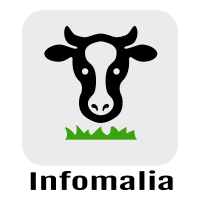Global Warming Potential of Cattle
If cows were measured as their own nation, they would be the third largest emitter.
These figures are calculated using the commonly used IPCC global warming potential (GWP) of 298x for nitrogen and 34x for methane over a 100 year period. [1]
However, the IPCC state “There is no scientific argument for selecting 100 years compared with other choices“. [2]
And this fails to take into consideration irreversible tipping points of climate events.
Over a more realistic 20 year period, methane has a GWP of 86, revealing the farming of animals to be even more destructive.
This graph is a best case scenario.

Global Warming Potential – Explained
The amount of CO2 emissions that would cause the same time-integrated irradiative forcing, over a given time horizon, as an emitted amount of a mixture of GHGs. It is obtained by multiplying the emission of a GHG by its Global Warming Potential (GWP) for the given time horizon. The CO2 equivalent emission is a standard metric for comparing emissions of different GHGs (IPCC, 4 AR 2007).
http://www.fao.org/fileadmin/user_upload/gleam/docs/GLEAM_2.0_Model_description.pdf
[1] Global Warming Potential of Livestock
The livestock sector is a significant contributor to global human-induced GHG emissions. Livestock supply chains emitted an estimated total of 8.1 gigatonnes CO2-eq in 2010 (using 298 and 34 as global warming potential for N2O and CH4 respectively). Methane (CH4) accounts for about 50 percent of the total. Nitrous oxide (N2O) and carbon dioxide (CO2) represent almost equal shares with 24 and 26 percent, respectively.
http://www.fao.org/gleam/results/en/
[2] IPCC Position on GWP / Time Horizon
“There is no scientific argument for selecting 100 years compared with other choices. The choice of time horizon is a value judgement because it depends on the relative weight assigned to effects at different times.”
Fuglestvedt et al., 2003; Shine, 2009
GHG production of cows
Cattle are the main contributor to the livestock sector’s emissions with about 5.0 gigatonnes CO2-eq, which represents about 62 percent of sector’s emissions. Beef and dairy cattle generate similar amounts of greenhouse gases
http://www.fao.org/gleam/results/en/
